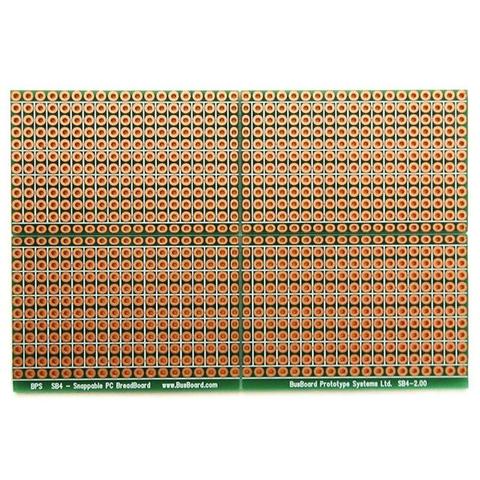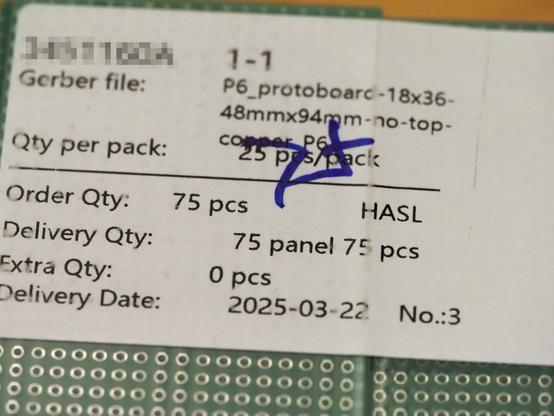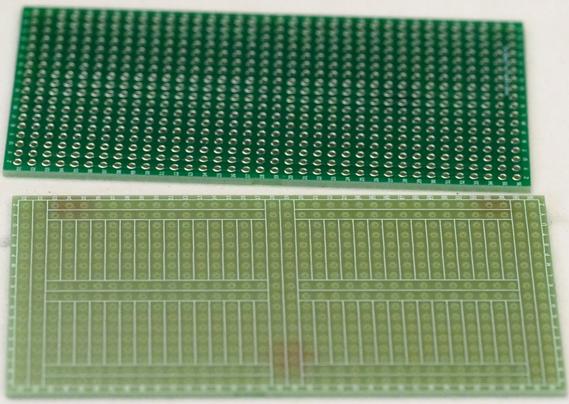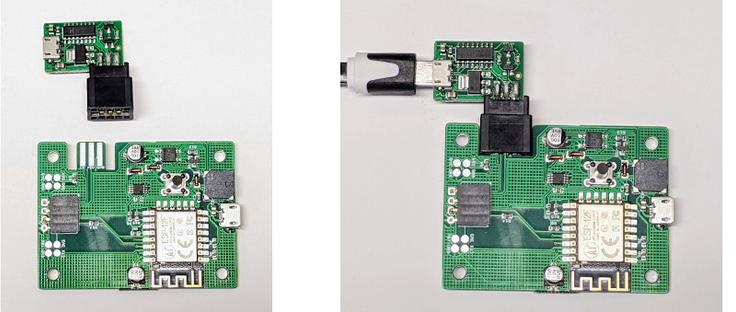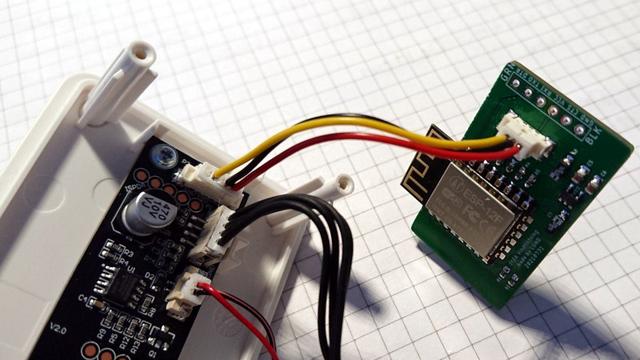About that BusBoard Prototype Systems SB4 board -- they're expensive. They're more than $6 each (Canadian) plus shipping from DigiKey. They're $10 each plus shipping from Mouser.
That's a lot for a hobbyist when you're experimenting, especially if you're making mistakes.
I looked around again recently, and couldn't find anything I liked at a reasonable price point.
So what does one do in this situation? Well, if you go Overkill 9000, you design your own prototyping perfboard and have a bunch manufactured for you! When you design your own, you can give it any features you like. So this one has:
18 x 36 (648 holes total)
It's two 18 x 18 sections, though I didn't have them scored for snapping.
A total of 6 horizontal busses in groups of 2, at the top and bottom plus one in the middle.
3 sets of 2 vertical busses within that space between horizontal bus sets, similarly edge - center - edge.
Then each row has a 6-hole pad on each side of the center 2 busses, which are spaced for IC or other standard 0.4" component layout.
Made of proper FR4 fiberglass. Good copper, good soldermask.
Silkscreened row and column IDs on both the front and back, at both the start and end of each row/column (and they match up with the back...).
And silkscreened boxes on the front showing the pad/buss pattern - no more flipping!
They arrived today and ... they're beautiful.
2/x
#PCB #CustomPCB #silkscreen #overkill #Overkill9000 #buss #busses #pads #components #IC #DIP
